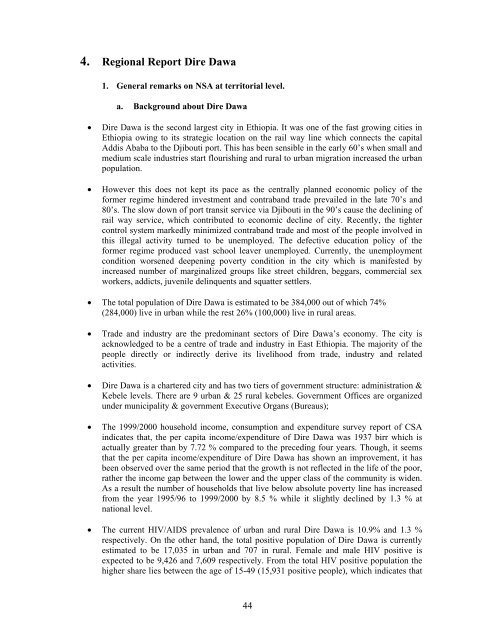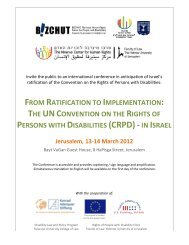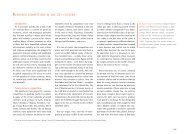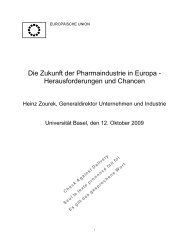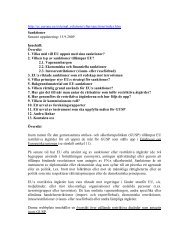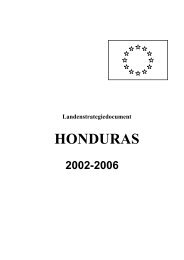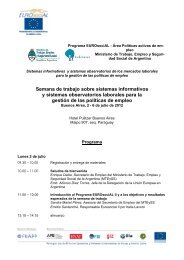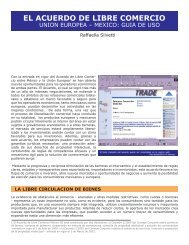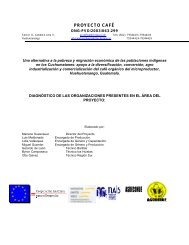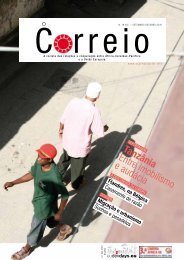Regional Reports - the European External Action Service
Regional Reports - the European External Action Service
Regional Reports - the European External Action Service
You also want an ePaper? Increase the reach of your titles
YUMPU automatically turns print PDFs into web optimized ePapers that Google loves.
4. <strong>Regional</strong> Report Dire Dawa<br />
1. General remarks on NSA at territorial level.<br />
a. Background about Dire Dawa<br />
• Dire Dawa is <strong>the</strong> second largest city in Ethiopia. It was one of <strong>the</strong> fast growing cities in<br />
Ethiopia owing to its strategic location on <strong>the</strong> rail way line which connects <strong>the</strong> capital<br />
Addis Ababa to <strong>the</strong> Djibouti port. This has been sensible in <strong>the</strong> early 60’s when small and<br />
medium scale industries start flourishing and rural to urban migration increased <strong>the</strong> urban<br />
population.<br />
• However this does not kept its pace as <strong>the</strong> centrally planned economic policy of <strong>the</strong><br />
former regime hindered investment and contraband trade prevailed in <strong>the</strong> late 70’s and<br />
80’s. The slow down of port transit service via Djibouti in <strong>the</strong> 90’s cause <strong>the</strong> declining of<br />
rail way service, which contributed to economic decline of city. Recently, <strong>the</strong> tighter<br />
control system markedly minimized contraband trade and most of <strong>the</strong> people involved in<br />
this illegal activity turned to be unemployed. The defective education policy of <strong>the</strong><br />
former regime produced vast school leaver unemployed. Currently, <strong>the</strong> unemployment<br />
condition worsened deepening poverty condition in <strong>the</strong> city which is manifested by<br />
increased number of marginalized groups like street children, beggars, commercial sex<br />
workers, addicts, juvenile delinquents and squatter settlers.<br />
• The total population of Dire Dawa is estimated to be 384,000 out of which 74%<br />
(284,000) live in urban while <strong>the</strong> rest 26% (100,000) live in rural areas.<br />
• Trade and industry are <strong>the</strong> predominant sectors of Dire Dawa’s economy. The city is<br />
acknowledged to be a centre of trade and industry in East Ethiopia. The majority of <strong>the</strong><br />
people directly or indirectly derive its livelihood from trade, industry and related<br />
activities.<br />
• Dire Dawa is a chartered city and has two tiers of government structure: administration &<br />
Kebele levels. There are 9 urban & 25 rural kebeles. Government Offices are organized<br />
under municipality & government Executive Organs (Bureaus);<br />
• The 1999/2000 household income, consumption and expenditure survey report of CSA<br />
indicates that, <strong>the</strong> per capita income/expenditure of Dire Dawa was 1937 birr which is<br />
actually greater than by 7.72 % compared to <strong>the</strong> preceding four years. Though, it seems<br />
that <strong>the</strong> per capita income/expenditure of Dire Dawa has shown an improvement, it has<br />
been observed over <strong>the</strong> same period that <strong>the</strong> growth is not reflected in <strong>the</strong> life of <strong>the</strong> poor,<br />
ra<strong>the</strong>r <strong>the</strong> income gap between <strong>the</strong> lower and <strong>the</strong> upper class of <strong>the</strong> community is widen.<br />
As a result <strong>the</strong> number of households that live below absolute poverty line has increased<br />
from <strong>the</strong> year 1995/96 to 1999/2000 by 8.5 % while it slightly declined by 1.3 % at<br />
national level.<br />
• The current HIV/AIDS prevalence of urban and rural Dire Dawa is 10.9% and 1.3 %<br />
respectively. On <strong>the</strong> o<strong>the</strong>r hand, <strong>the</strong> total positive population of Dire Dawa is currently<br />
estimated to be 17,035 in urban and 707 in rural. Female and male HIV positive is<br />
expected to be 9,426 and 7,609 respectively. From <strong>the</strong> total HIV positive population <strong>the</strong><br />
higher share lies between <strong>the</strong> age of 15-49 (15,931 positive people), which indicates that<br />
44


